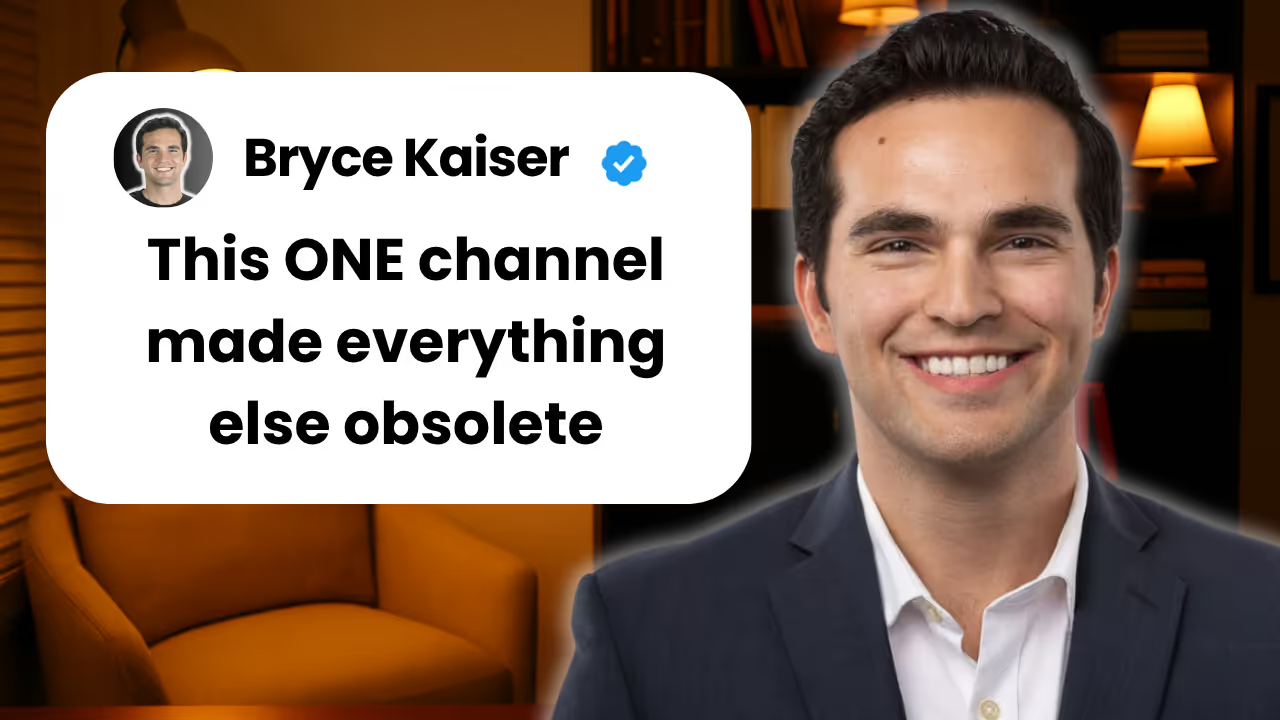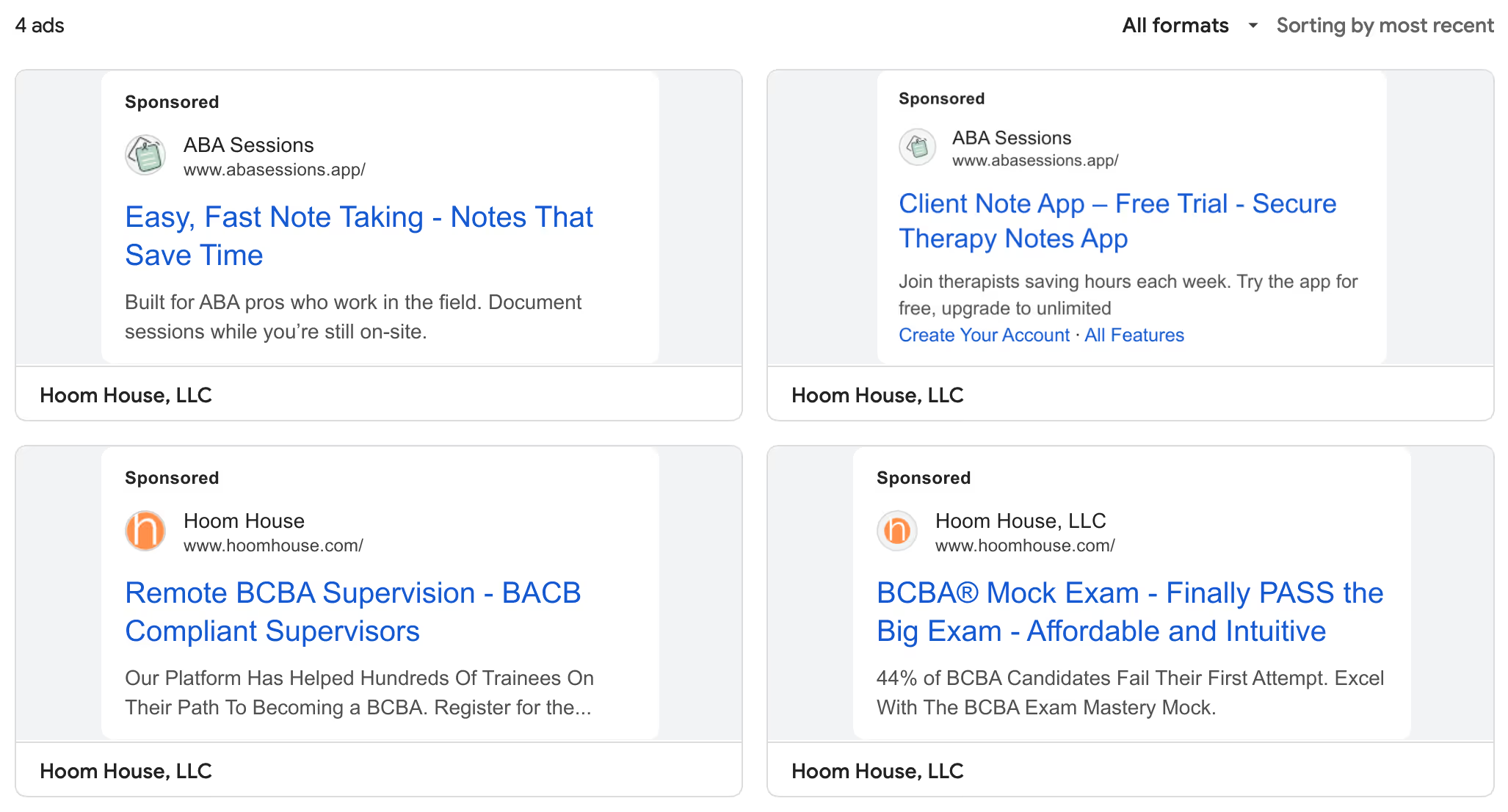Why This Founder Said NO to Easy VC Money

In 2020, raising money was easier than ever before, and yet, Bryce Kaiser and his wife Lauren did something that was a bit crazy.
They said no to all of it.
While everyone was raising money because it was "free money" during the COVID boom, the HoomHouse founders deliberately chose to stay bootstrapped.
Then on top of that, they walked away from maybe the hottest market in the entire world at the time: telehealth.
And instead they just doubled down on one simple growth strategy.
Three years later it all worked out. They sold the company on their own terms.
In this deep dive I break down with Bryce, his simple approach to building a marketplace business, why saying no to VCs was actually the smartest move they ever made, and the surprisingly simple approach that made their exit possible.
The Story of HoomHouse
Today, HoomHouse is a software platform that helps board certified behavior analysts (BCBAs) manage the fieldwork supervision process, but that's not how Bryce and Lauren started in 2015.
How it got started
The idea for HoomHouse came from a family crisis. Bryce's wife Lauren was working as a behavior therapist with kids on the autism spectrum (and still does today) when Bryce's nephew was diagnosed with autism at two years old.
The problem? There was a two-year wait list for services.
As Bryce put it, "I saw that and I just thought that was ridiculous."
Since Bryce and Lauren lived on the opposite side of the state from his nephew, Lauren was able to provide some support through video calls. That's when Bryce had his lightbulb moment.
"I was like, well, why can't we do this for more people?" Bryce explained. "My background is in tech and software and so it was really easy for me to just imagine building a software platform to connect parents of kiddos with autism, with therapists. There's a shortage of therapists in one area and surplus in another area. So why don't we just connect the dots?"
Bryce built something over a weekend, posted it on Twitter, and it went viral.
Simple marketplace approach (pick one side)
HoomHouse gets started and it gets out of the gate really well. But if you know anything about marketplace businesses, you know they're pretty tricky because essentially you have a built-in chicken and egg problem.
As Neil Yeoh put it in a different deep dive, marketplaces are like building three different businesses all at once. You have one side of the marketplace, you have another side of the marketplace, and then you also have the matching system. So you're essentially building three big systems that are like three different businesses all at once.
When I asked Bryce about this exact problem, he had a really interesting and really simple way of putting it.
"My whole thing with marketplaces is actually just instead of dealing with the chicken, the egg, you just deal with either the chicken or the egg. So you focus on one side," Bryce said. "You have to look at what do you feel like you can control more easily and why, where do you have to experiment more?"
For HoomHouse, the choice was clear. There was no shortage of therapists looking for a new way to make money. According to Bryce, "they were really drawn to this remote work option. We started this back in 2015 before telehealth was cool, before remote work was cool."
The therapist side wasn't the mystery. The families were.
The pivot decision in 2020
From 2016 to 2020, things were going really well for HoomHouse. They went from text messaging to telehealth and were growing steadily.
But of course, 2020 happens, and when everyone is zagging, Bryce and Lauren decided to zig.
"In 2020 and everyone's getting into telehealth, it explodes, it's going crazy," Bryce mentioned. "And there was a lot of pressure to actually take on venture capital at that time because everyone else was taking on venture capital and every telehealth thing was being bought up and grown. It was really sexy, right?"
But instead of following the crowd, Bryce and Lauren made two crucial decisions: they walked away from telehealth when it was the hottest market, and they said no to raising venture capital.
There are two different ways to read the market here. You can read it from a bottom-up approach, looking at customer needs and root causes. Or you can read it from a top-down approach, looking at broader market trends and VC interest.
Bryce and Lauren chose the bottom-up approach. As Bryce explained, "if you get back to the root issue of what was happening in this space, it's that there weren't enough therapists to provide services. So how can we get more therapists through the system that are getting a quality education, quality certification?"
That's when they shifted HoomHouse to become a marketplace where aspiring behavior therapists could find supervisors for their required 2000 fieldwork hours.
Why they said no to VC money
The decision to reject VC funding wasn't just about market strategy - it was about the lifestyle Bryce and Lauren wanted to maintain.
"An important thing for me and Lauren was that we had built a company that worked for us and our lifestyle," Bryce noted. "She went full-time on the business after we had our first kid and she didn't want to go back to a clinic and work there."
They had made deliberate choices along the way to fit the business into their lifestyle. As Bryce put it, "We didn't want to have 24/7 support all the time because that was really stressful for us, and we made all these choices to actually fit the business into our lifestyle."
Bryce had experience with VC-backed businesses before and knew it wasn't right for everyone. "I didn't want to give away the majority of my company. I didn't want to be on this crazy grow or die trajectory. I wanted to stay focused on the impact," he told me.
Even when VCs were willing to write checks, Bryce found they weren't aligned with his values. "As we were talking to VCs, they all were confused, like, wait, are you trying to make an impact or are you trying to make money? And I had to say, Hey, it can be both. It's a social enterprise. We are doing good and making money along the way."
The exit
This decision to stay bootstrapped paid off. In 2024, Bryce and Lauren sold HoomHouse on their own terms.
As Bryce explained their decision to sell, "We reached the top of the mountain for the business. By the time we sold the company one in three aspiring behavior therapists was going through our platform."
There was also a personal factor. "My wife and I never should have been business partners," Bryce mentioned. "I love my wife so much. She's amazing. But she never wanted to be a high growth entrepreneur. She was a therapist. She just wanted to help people."
Bryce has since moved on to starting a venture studio called Centered.
The Growth Strategies of HoomHouse
Paid Ads (Google Ads)
HoomHouse's growth was actually pretty simple. As Bryce put it, "Google Ads made everything else obsolete, or irrelevant. Google Ads were just so high performing because we had a very transactional service."
Bryce ran only four types of ads the entire time:

It's a pretty good example of having a niche with a really crystal clear, defined problem that people have. Because of that clarity, both the customer acquisition cost (CAC) and lifetime value (LTV) became predictable.
Once you know your CAC and your LTV, you've essentially turned your business into a simple math equation: LTV - CAC - operational costs = your profit.
Would this still work today?
Probably. Google Ads are changing right now, but the fundamentals of search marketing aren't going anywhere.
Sure, ChatGPT and AI tools are becoming search engines, but search is also expanding to platforms that weren't traditionally thought of as search engines. Take Blank Mason, a candle company I've covered in another deep dive - they grow significantly through TikTok search and Instagram search.
The lesson? Search isn't dead, it's just evolving beyond Google.
If you want to learn more about Bryce, you can find him on LinkedIn or check out Centered on their website.

